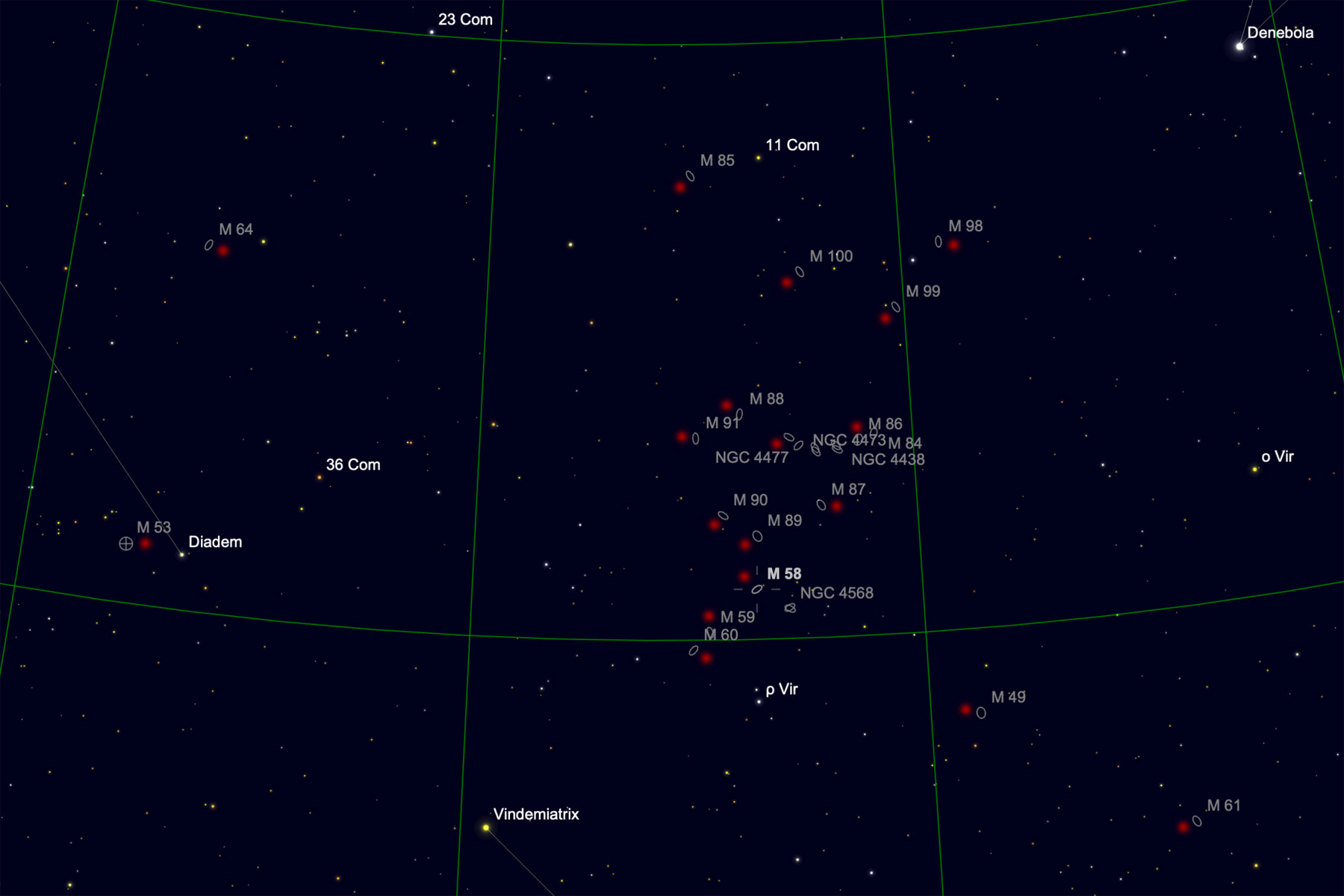
Introduction | Map | My Own Photos | My Own Observations | References
On this page I collect my observations of the spiral galaxy M 90 (NGC 4569) in the constellation Virgo.
The spiral galaxy M 90 in the constellation Virgo is seen nearly edge-on with a bright core. The galaxy is a member of the Virgo galaxy cluster and is probably gravitationally coupled to the galaxy IC 3583 (Arp 76).
The four Messier galaxies M 58, M 87, M 89, and M 90 form a triangle in my Vespera mosaic (see below) with a bright dot in the center. M 90 is the upper edge of the triangle (in my Vespera mosaic).
With the Vespera Pro, I can photograph M 90 together with M 89.
| M 89 (NGC 4552) | M 90 (NGC 4569) | IC 3583 | ||
| Size: 5.1' × 4.7' (Wikipedia) Distance: 54 million light years (Wikipedia) Rating: * (Stoyan) |
Size: 9,5′ × 4,4' (Wikipedia) Distance: 44 million light years (Wikipedia) Rating: * (Stoyan) |
Size: 2.2' × 1.1' (Wikipedia) Distance: 48 million light years (Wikipedia) Rating: --- |
The spiral galaxy M 90 in constellation Virgo (about at the center) (Image Courtesy of SkySafari Astronomy, www.simulationcurriculum.com)
Section of the Virgo galaxy cluster, M 58 in constellation Virgo is selected (Image Courtesy of SkySafari Astronomy, www.simulationcurriculum.com)
The spiral galaxy M 90 (at the bottom left) in constellation Virgo (in the Virgo galaxy cluster) (Image Courtesy of SkySafari Astronomy, www.simulationcurriculum.com)
The four Messier galaxies M 58, M 87, M 89, and M 90 form a triangle in the Vespera mosaic with a bright dot in the center. At the bottom in the center, there are the Siamese Twins NGC 4567/68. (Image Courtesy of SkySafari Astronomy, www.simulationcurriculum.com)
M 90 with IC 3583 (Image Courtesy of SkySafari Astronomy, www.simulationcurriculum.com)
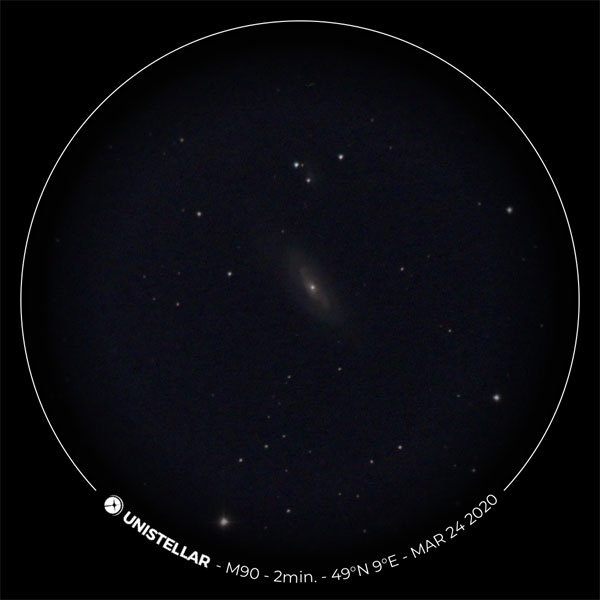 |
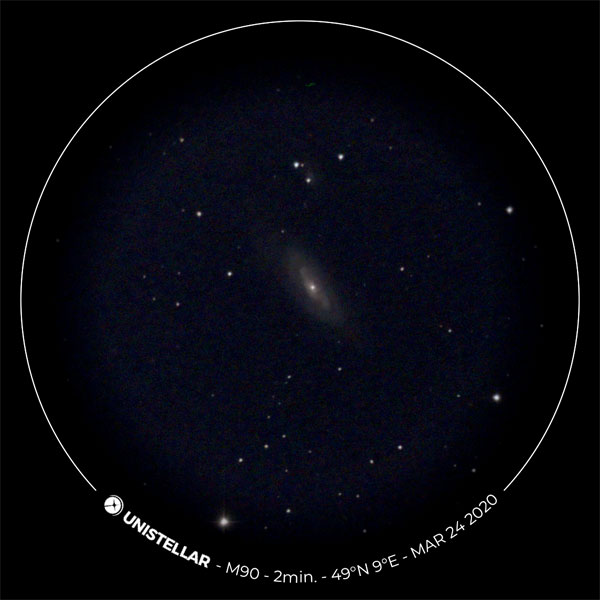 |
|
M 90 - Mar 24, 2020 |
M 90 - Mar 24, 2020, processed |
|
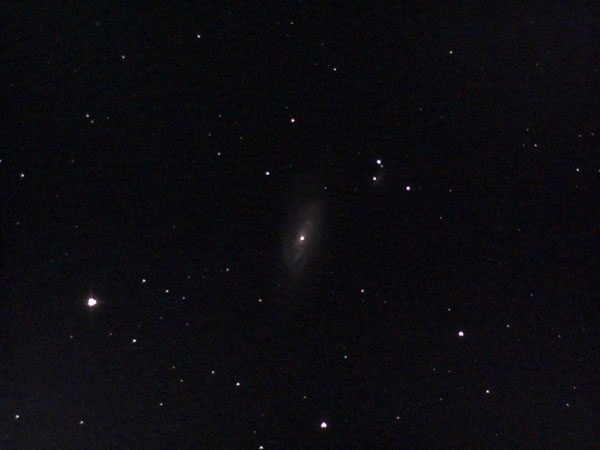 |
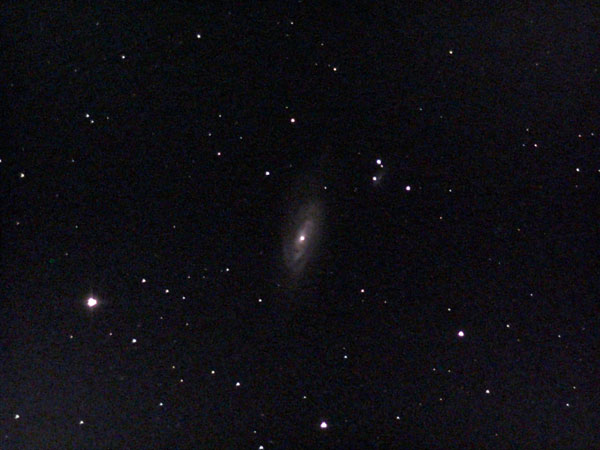 |
|
M 90 - May 30, 2021 |
M 90 - May 30, 2021, processed |
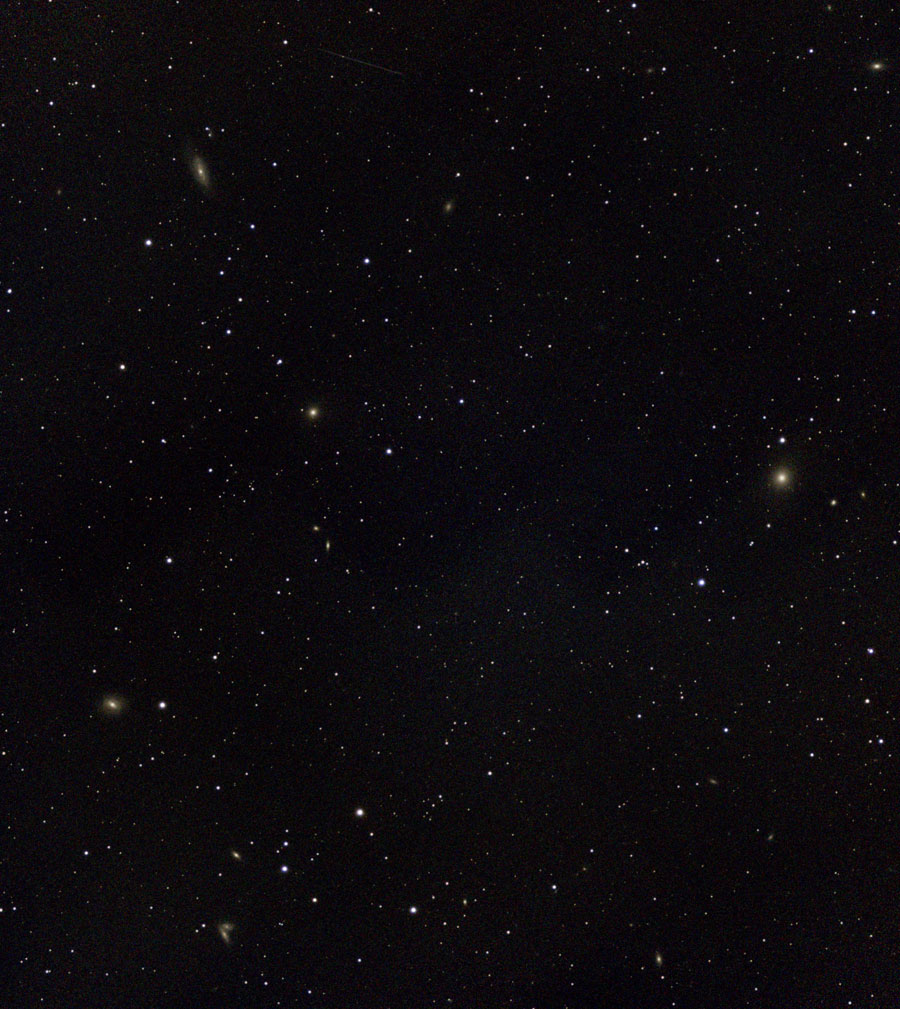 |
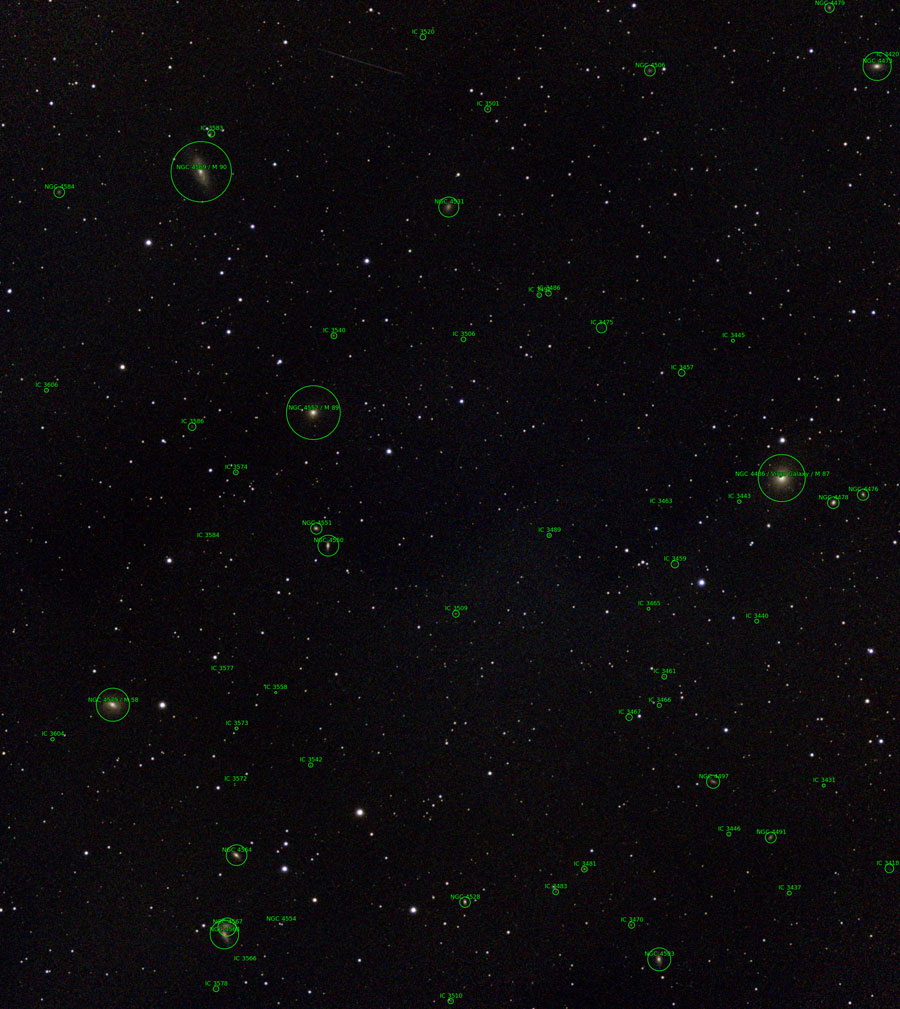 |
|
M 90, Jun 9, 2023 - 6970s, mosaic, original |
Evaluation by nova.astrometry.net, large |
The four Messier galaxies M 58, M 87, M 89, and M 90 form a triangle in the Vespera mosaic with a bright dot in the center. M 90 is the upper edge of the triangle. At the bottom left, there are the Siamese Twins NGC 4567/68.
Above M 90 there is the galaxy IC 3583, to which M 90 is presumably gravitationally coupled (Arp 76).
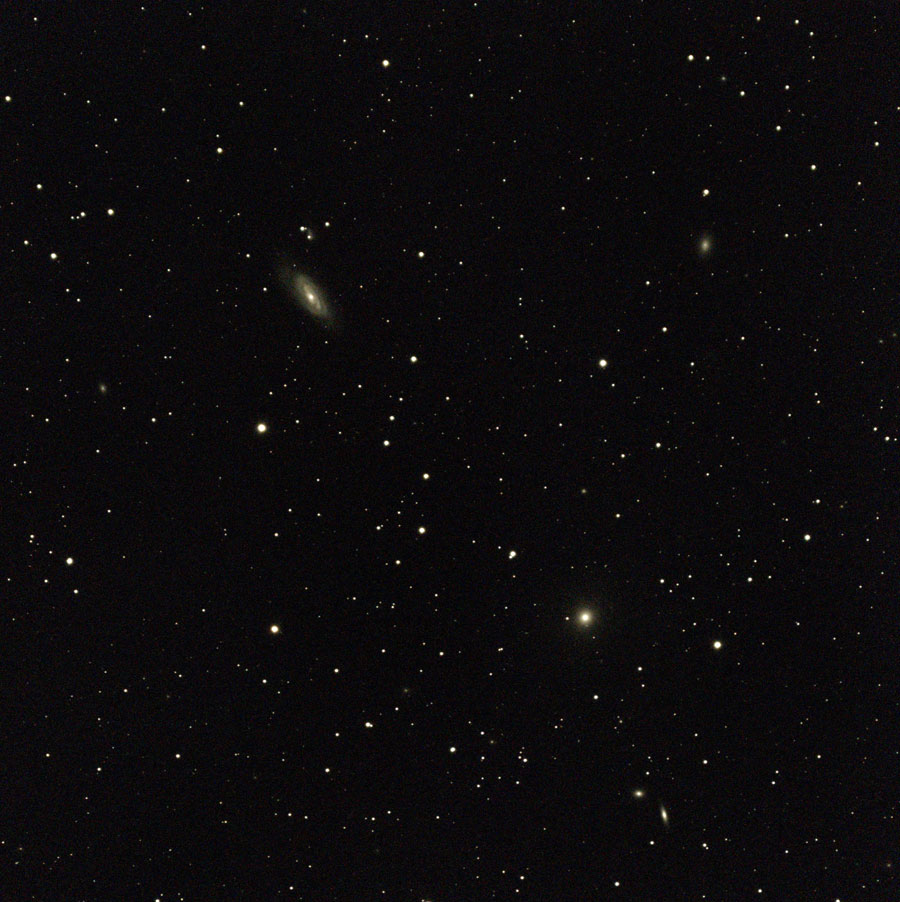 |
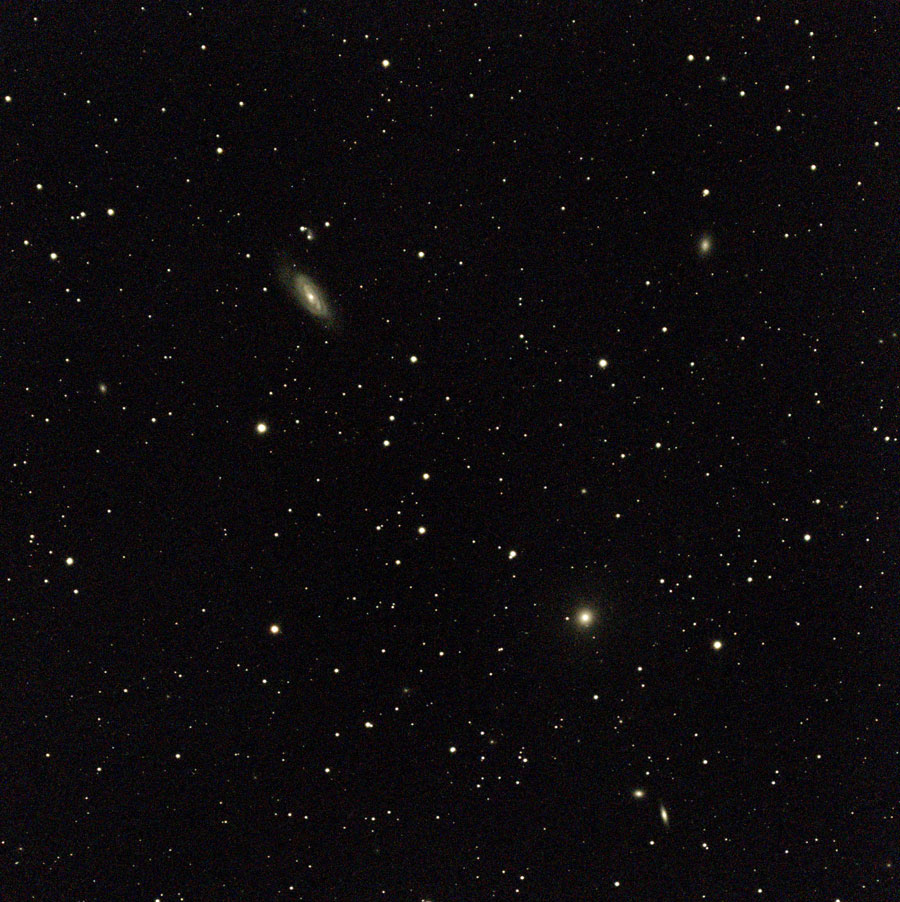 |
|
M 90 and M 89, Apr 29, 2025, 2000p, 25 min |
M 90 and M 89, Apr 29, 2025, 2000p, 25 min, processed |
|
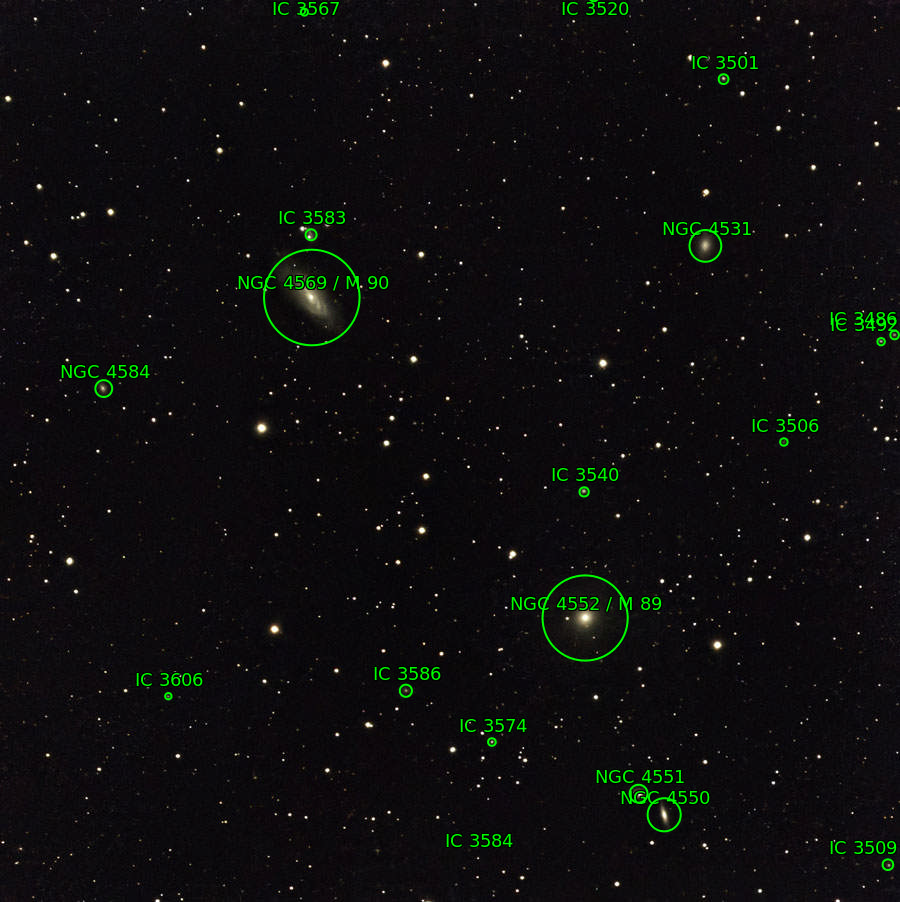 |
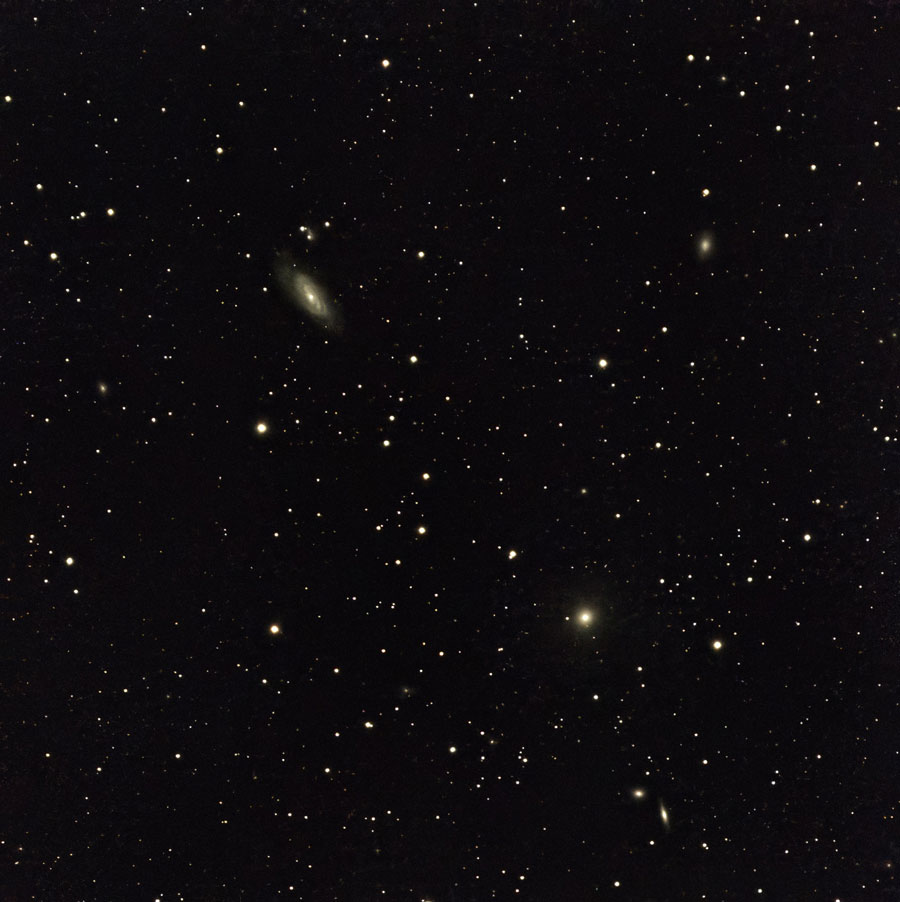 |
|
Evaluation with Nova.astrometry.net* |
M 90 and M 89, Apr 29, 2025, 2000p, 25 min, processed and denoised (PAI) |
|
*) Too many galaxies to be listed here! NGC galaxies: NGC 4531, NGC 4550, NGC 4551, NGC 4584 |
||
Above M 90 there is the galaxy IC 3583, to which M 90 is presumably gravitationally coupled (Arp 76).